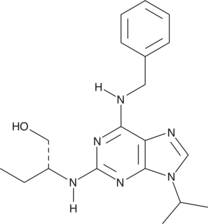Description
A quinone with diverse biological activities; inhibits fibril formation by Aβ42 and mouse prion protein at 100 and 300 μM; stimulates cell proliferation, reduces glutamate-induced production of ROS, necrosis, and caspase-3 activity and increases activity of SOD, CAT, and GPX in neural stem and progenitor cells; inhibits LPS-induced production of NO and PGE2 and suppresses LPS-induced expression of various pro-inflammatory mediators in primary microglia; reduces Iba-1 expression in the cerebral cortex and hippocampal dentate gyrus in mice at 3 and 10 mg/kg; decreases the number of α-SMA-positive hepatic cells, collagen deposition, and hepatic hydroxyproline levels in a mouse model of liver fibrosis; decreases serum glucose and total cholesterol levels, increases brain SOD, CAT, and GPX activities, and decreases brain lipid hydroperoxide levels in mice with streptozotocin-induced diabetes
Formal name: 4,5-dihydro-4,5-dioxo-1H-pyrrolo[2,3-f]quinoline-2,7,9-tricarboxylic acid
Synonyms: PQQ
Molecular weight: 330.2
CAS: 72909-34-3
Purity: ≥95%
Formulation: A crystalline solid
Product Type|Biochemicals|Natural Products|Microbial Metabolites||Product Type|Biochemicals|Ox Stress Reagents|Antioxidants||Product Type|Biochemicals|Small Molecule Inhibitors|Caspases||Product Type|Biochemicals|Small Molecule Inhibitors|MMPs||Research Area|Endocrinology & Metabolism|Cofactors & Vitamins||Research Area|Endocrinology & Metabolism|Metabolic Diseases|Diabetes||Research Area|Endocrinology & Metabolism|Metabolic Diseases|Dyslipidemias||Research Area|Immunology & Inflammation|Inflammatory Lipid Mediators|Prostaglandins||Research Area|Immunology & Inflammation|Innate Immunity||Research Area|Neuroscience|Neurodegenerative Disorders|Alzheimer’s Disease||Research Area|Oxidative Stress & Reactive Species|Antioxidant Activity||Research Area|Oxidative Stress & Reactive Species|Lipid Peroxidation||Research Area|Oxidative Stress & Reactive Species|Reactive Oxygen|Catalase||Research Area|Oxidative Stress & Reactive Species|Reactive Oxygen|Gluthathione Peroxidase||Research Area|Oxidative Stress & Reactive Species|Reactive Oxygen|Superoxide Dismutase



